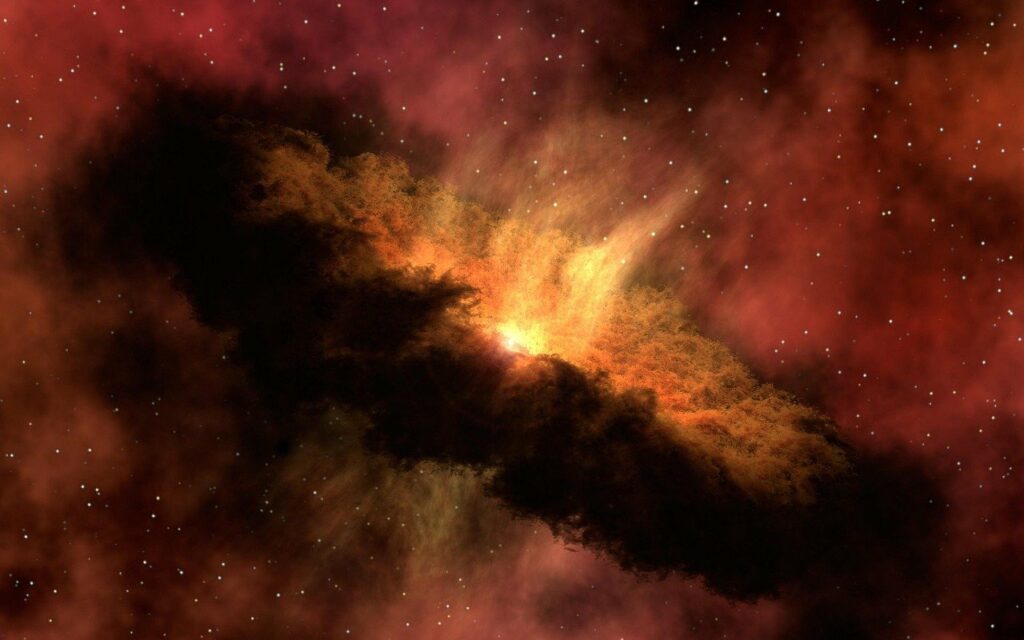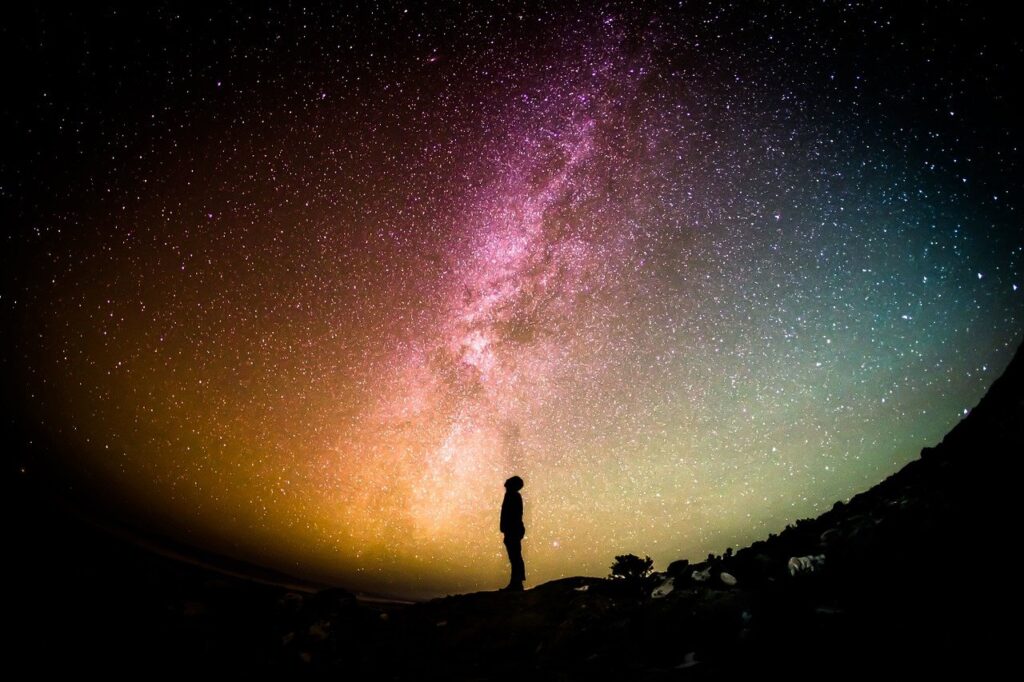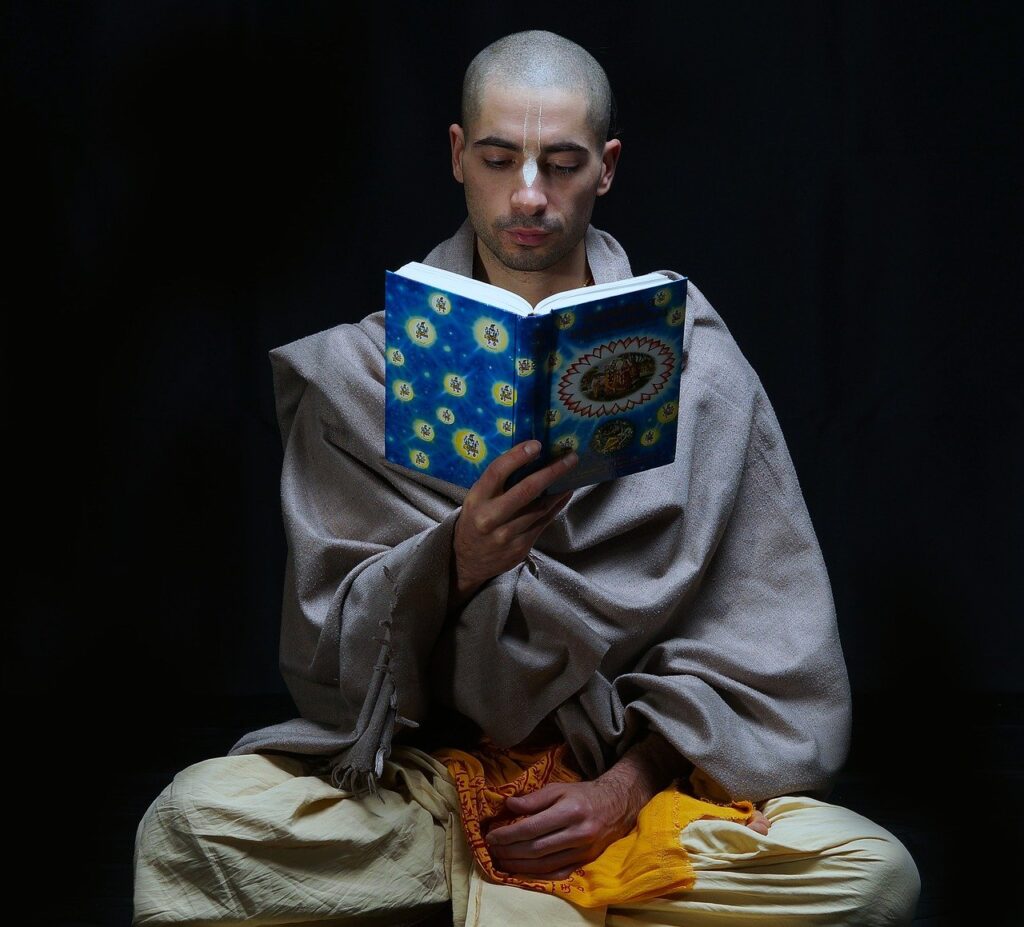“That Brahman is in front and in back, in the north, south, east, and west, and also overhead and below. In other words, that supreme Brahman (Parabrahman or Para brahman) effulgence spreads throughout both the material and spiritual skies.”
(Mundaka Upanishad 2.1.1)
God, who is the personification of eternity, knowledge, and bliss, is perceived in three of His aspects- Brahman (residing everywhere), Antaryami (residing within as the Supersoul), and Bhagavan (the Supreme Person who lives beyond this material world and possesses six kinds of opulence in full – strength, fame, wealth, knowledge, beauty and renunciation). Just as sunshine is non-different from the sun, similarly, the effulgence of the Supreme Lord constitutes the all-pervading Para Brahman and is non-different from Him. The first aphorism of Vedanta-sutra states ‘Athato brahma jijnasa’ – ‘Now one should inquire about Brahman – The absolute truth, the transcendental, spiritual nature’. Let us recognize and glorify the Supreme qualities of the all-pervading Parabrahman. “Brahman shines as an ever existing, all knowing, all blissful, Infinite being”.
#1 Parabrahman is the source of everything
Para Brahman is the source of all there is. Lord Krishna confirms this in Bhagavad Gita wherein He enlightens Arjuna as follows –
aham sarvasya prabhavo
mattah sarvam pravartate
iti matva bhajante mam
budha bhava-samanvitah
(Bhagavad Gita, 10.8)
–
I am the source of all spiritual and the material worlds. Everything emanates from Me. The wise who know this perfectly engage in My devotional service and worship Me with all their hearts.
The Bhagavad Gita also states –
yac capi sarva bhutanam
bijam tad aham arjuna
na tad asti vina yat syan
maya bhutam caracaram
(Bhagavad Gita, 10.39)
–
Furthermore, O Arjuna, I am the generating seed of all existences. No moving or nonmoving being can exist without Me.
Everything rests upon the Supreme Lord, whose effulgence pervades the entire creation as Para Brahman.
mattah parataram nanyat
kinchid asti dhanan jaya
mayi sarvam idam protam
sutre mani gana iva
(Bhagavad Gita 7.7)
–
O conqueror of wealth (Arjuna), there is no truth superior to Me. Everything rests upon Me, as pearls are strung on a string.
#2 Para-Brahman cannot be attained through mundane sensory perceptions, thoughts, or speculations of Man
Divine nature lies beyond the purview of matter or our mundane senses. That is why the Supreme is also known as ‘adhoksaja’ or one who transcends the limits of sense perception or sensuous experience. From the conversations of Yajnavalkya and Gargi as recorded in the Brihad-aranakya-Upanishad, we come to learn –
adva etadaksaram gargyadrstam drastr, asrutam srottr, amatam mantr, avijnatam vijnatr; nanyadato’sti drastr, nanyadato’sti srotr, nanyadato’sti mantr, nanyadato’sti vijnatr; etasminnu khalvaksare gargyakasa otasca protasceti
(verse 3.8.11)
–
Well, Gargi! Standing on the mundane platform, nobody has ever seen this imperishable Brahman, but He sees all; nobody has ever made Him the object of His hearing, but He hears everything; nobody has ever conceived Him, but He conceives all; nobody has ever known Him, but He knows all. There is no other observer than He, no other hearer than He, no other conceiver than He, no other knower than He. Well, Gargi! The infinite space is fully surcharged with the presence of this indestructible and immortal Brahman.

This is also confirmed in the Talabakar upanishad –
Yasyamant tasya manth manth yasye na yed sya
Avijnant vijnanta vijnantamah vijantamah
–
He who knows for certain that Brahman is incomprehensible knows something of Him; he on the other hand, who thoroughly believes that he comprehends Brahman has not known Him. Sages declare that Brahman cannot be realized through limited sense perception. It is only fools who think He is so understandable.
#3 One should rely on Aptavakyas, (the authoritative testimonies of self-realized souls that enables us to understand the indisputable truth), like the Vedas, Upanishads, etc and not upon independent sensuous realizations, to realize the Brahman
naiva vacha na manasa praptum śakyo na caksusa
astiti bruvato’nyatra katham tadupalabhyate
(Katha Upanishad, 2.3.12)
–
Not by speech, not by mind, not by the eye, can He (Para Brahman) be attained; How can He be realized by one except by those only who are on the same plane?
It is for this reason that Srimad Bhagavatam (Bhagavata Purana) assumes such paramount importance as it was spoken by the great devotee, Sri Sukadeva Goswami, and it deals with the life, teachings, and pastimes of exalted personalities.
Nigama kalpa taror galitam phalam
suka-mukhad amrita-drava-samyutam
pibata bhagavatam rasam alayam
muhur aho rasika bhuvi bhavukah
(Srimad Bhagavatam, 1.1.3)
–
Expert and thoughtful men, relish Srimad-Bhagavatam, which is the ripe fruit of the desire tree of Vedic literatures. It arose from the lips of Sri Sukadeva Goswami. Therefore this fruit has become even more tasteful, although its nectarean juice was already relishable for all, including liberated souls.
That is why the Bhagavad Gita states that in the earlier days, the sacred science of the Supreme was conveyed down through chains of bonafide disciplic succession to ensure that it was free from adulterations or additions of any independent sensuous realizations.
evam parampara praptam
Imam rajarsayo viduh
(Bhagavad Gita 4.2)
–
This supreme science was thus received through the chain of disciplic succession, and the pious kings understood it in that way.
#4 Para-Brahman is not passive or devoid of qualities but is instead an omnipotent ever-active existence revealing Himself out of His free will unto His devotees
nayamatma pravacanena labhyo na medhaya na bahuna srutena
yamevaisa vrnute tena labhyastasyaisa atma vivrnute tanum svam
(Katha Upanishad, 1.2.23)
–
Brahman cannot be attained by many fine words nor by one’s intellect or even the hearing of scriptural texts. He only attains the Brahman who pleads or longs for Him. To him, this Brahman reveals His true nature.
Sri Isopanisad encaptures this mood of a devotee, who totally surrenders himself unto the Supreme and begs for causeless mercy.
agne naya supatha raye asman
visvani deva vayunani vidvan
yuyodhy asmaj juhuranam eno
bhuyisthham te nama-uktim vidhema
(Isopanisad Mantra 18)
–
O my Lord, who art as powerful as fire, O omnipotent one, now I offer unto You my obeisances, falling upon the ground at Your feet. O my Lord, please lead me on the right path to reach You, and since You know all that I have done in the past, please free me from the results of my past sins so that there is no hindrance to my (spiritual) progress.
#5 All the contraries and contradictions blend within the Para-Brahman into a harmonious whole
Brahman is a paradox to the worldly judgment as all the irreconcilables find their reconciliation within Brahman. The great Bengali poet Kalidasa recognizes this in his writings wherein he composes – “Thou are ever-present in our hearts, yet thou art at a distance; Thou are free from desires, yet Thou practice severe austerities; Thou are full of mercy, yet Thou are unaffected by sorrow; Thou are the oldest being, yet Thou art free from the infirmities of age…”
Sri Isopanisad glorifies such apparent contradictions manifested by the Supreme as follows –
tad ejati tan naijati
tad dūre tad v antike
tad antar asya sarvasya
tad u sarvasyāsya bāhyatah
(Isopanisad, mantra 5)
–
He walks and does not walk. He is both far and near. He is within everything, and yet He is outside of everything.
The Svetasvatara Upanishad also glorifies the harmony of the apparent contradictions present in the Brahman.
apanipado javano grahita pasyaty acaksuh sa srnoty akarnah
sa vetti vedyam na ca tasyasti vetta tam ahur agryam purusam mahantam
(Svetasvatara upanishad, 3.19)
–
Grasping without hands, moving without feet, He sees without eyes and hears without ears. He knows what is to be known, but no one knows Him. The sages have called Him the First and the Greatest being.
#6 Parabrahman is the Supreme cause and all-pervading. Yet He is transcendental to material nature
Para Brahman pervades the universe, coexists with it, remains outside it, and also exists even after the universe is dissolved. In other words, He exists before the creation, with creation, outside creation, and even after the destruction of all created things.
sahasra sheerhaa purushah
sahasraaksha shrarpaath
sa bhuumim visvatho vruthvaa
athyathishta ddhasaangulam
(Purusha Shukta prayers, Rigveda)
–
Brahman has infinite heads, infinite eyes and infinite feet. He has enveloped this world from all sides and has (even) transcended it by ten inches (angulas).
Lord Krishna confirms the same in Bhagavad Gita –
atha va bahunaitena
kim jnatena tavarjuna
vistabhyaham idam kritsnam
ekamsena sthito jagat
(Bhagavad Gita, 10.42)
–
But what need is there, Arjuna, for all this detailed knowledge? With a single fragment of Myself (ie, I am both immanent and transcendent), I permeate and support this entire universe.ye caiva sattvika bhava
rajasas tamasas ca ye
matta eveti tan viddhi
na tv aham tesu te mayi
(Bhagavad Gita, 7.12)
–
Know that all states of material existence – the modes of goodness, passion, or ignorance – are manifested by My energy. I am, in one sense, everything, but I am independent. I am not under the influence of the modes of material nature, for they, on the contrary, are within Me.


